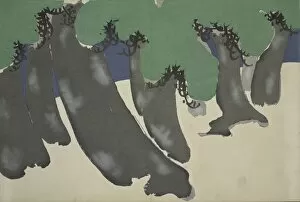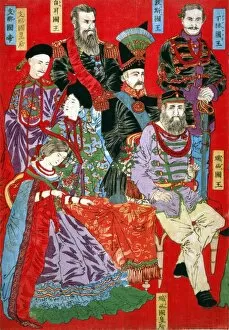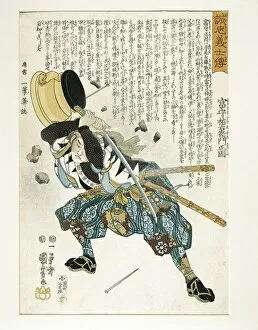Japanese Art Collection (page 24)
Japanese art is a captivating and diverse world that encompasses various themes, styles, and periods
All Professionally Made to Order for Quick Shipping
Japanese art is a captivating and diverse world that encompasses various themes, styles, and periods. From the mesmerizing ukiyo-e prints to the intricate woodblock designs, each artwork tells a unique story. In "The Dream of the Fisherman's Wife, " created around 1814, we are transported into a realm of eroticism and fantasy. This provocative piece by an unknown artist explores desire and sensuality in a way that challenges societal norms. Harunobu Suzuki's "Two Lovers" from 1750 captures an intimate moment between two individuals. The delicate lines and soft colors evoke a sense of tenderness, showcasing the beauty of human connection. "Saito Oniwakamaru, " dating back to 1827, portrays a legendary figure with great strength and determination. Through bold brushstrokes and vibrant colors, this artwork reflects the courage and heroism often celebrated in Japanese culture. Even renowned figures like Ludwig van Beethoven found their place in Japanese art. In his portrait while composing the Missa Solemnis in 1820, we witness how Western influences merged harmoniously with traditional Japanese aesthetics. "A Woman Bathing" from around 1770 presents us with an intimate scene where vulnerability meets elegance. The artist skillfully captures both physical beauty and emotional depth through meticulous details. "Lovers under a quilt with phoenix design" takes us back to the enchanting world of romance during the 1680s. This exquisite depiction showcases not only love but also incorporates mythical elements such as phoenixes symbolizing rebirth and renewal. "The Running Well Teahouse" transports us along Japan's Tokaido road through its vivid color woodblock print technique. It invites viewers to experience moments of tranquility amidst nature's splendor—a perfect blend of artistic mastery combined with storytelling prowess. "The Flourishing of Seven Coasts with Big Fish" from Nana ura tairyac hanjac no zu depicts a vibrant scene filled with life and abundance.














